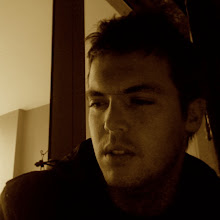 and here is the next rather negative review on a book that i would recommend that you read, but one that i would tell you to read with caution.
and here is the next rather negative review on a book that i would recommend that you read, but one that i would tell you to read with caution.the subject of the book (well, the first half of the book anyway) is about the ability to make rapid decisions under pressure (or not under pressure) that will prove to be as good as, if not better, than decisions made under conditions of expert enlightenment. The author, Malcolm Gladwell, coins the concept as ‘thin-slicing’... by this he simply means that you may know the content of the whole by looking at a slice. Not just any slice but a thin one.
I give credit to the author for being able to convince himself of this theory and for the attempt to convince others.
The concept of this slicing is ‘proved’ by looking at a few carefully selected examples where the concept works in the real world. He looks at three environments. (I couldn’t help wondering if his use of limited examples was because the theory only works in 3 places?) He considers the following:
- married couples (perhaps the most complex of all cakes from which to take a thin slice from)
- military decisions (where rapid decisions have always set the average apart from the exceptional)
and
- marketing research (which i didn’t feel was too applicable and mr gladwell spent the last half of the book looking almost exclusively at it).
More than this, I enjoyed 2 specific aspects of the book:
1. The author was quick to acknowledge the limitations of his theory and was realistic in the application of it. He provided explanations as to why the theory would not work in specific environments and under certain conditions. I found these explanations to be beautifully philosophical and I enjoy well constructed philosophy.
2. It was scientific. It was an enlightening stroll into the land of behavioral science with many look out points and rest-stops.
All in all, the general philosophy of the book was a bit too much. It was like trying to fit my extra length king size bed with a single bed sheet: The author was forced to stretch things a bit far.





No comments:
Post a Comment